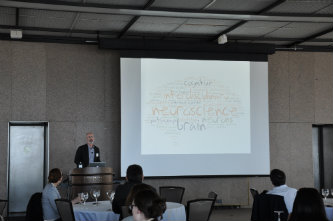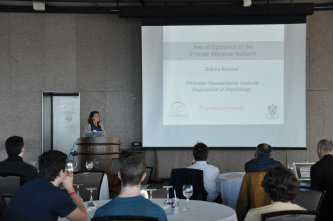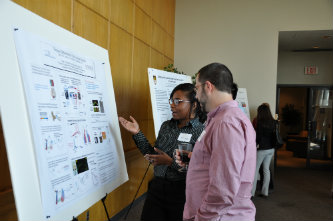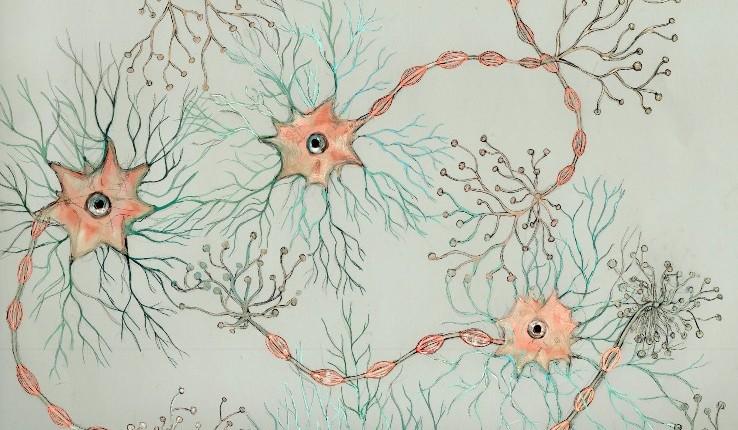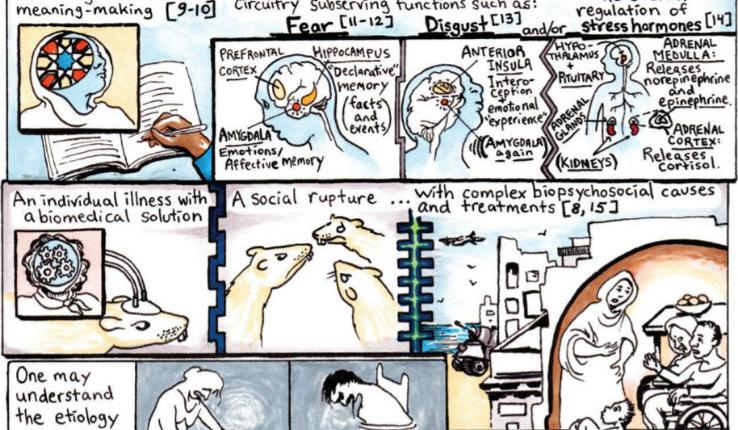Lehigh Hosts First Interdisciplinary Neuroscience Symposium
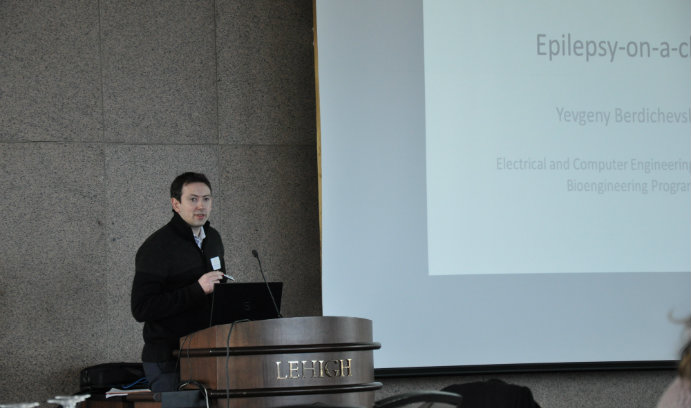
Yevgeny Berdichevsky, assistant professor of electrical and computer engineering, presents "Epilepsy-on-a-chip" at Lehigh's interdisciplinary neuroscience symposium, which featured presenters from Lehigh and other universities.
“Neurosciences have had really nice growth in the last 10 or 15 years [at Lehigh], both in our undergraduate program and in our faculty,” said R. Michael Burger, associate professor of neurosciences in the department of biological sciences, as he welcomed attendees to an event that illustrated that growth: Lehigh’s first interdisciplinary neuroscience symposium.
The event, held on April 14 in Iacocca Hall’s Wood Dining Room, drew more than 80 attendees from Lehigh and from several states around the region, including Maryland, Delaware and New Jersey.
The symposium, said Burger, was made possible thanks to funding provided by the Office of the Provost. He thanked Murray Itzkowitz, professor and chair of the department of biological sciences; Maria Brace, business manager for the department; and Vicki Ruggiero, administrative secretary, for their roles in planning and organizing the event.
Alan Snyder, vice president and associate provost for research and graduate studies, welcomed participants and thanked the event’s organizers.
“Neuroscience at Lehigh kind of wildly crosses departmental boundaries,” said Snyder. “We have people contributing to a neuroscience agenda across the university, so it’s particularly wonderful that four people in the biological sciences department would take it upon themselves to put something like this together. We’re grateful for that.”
The symposium included one-hour presentations from four distinguished extramural guests:
- Scott C. Baraban, professor of neurological surgery and the William K. Bowes Jr. Endowed Chair in Neuroscience Research at the University of California, San Francisco, presented “Zebrafish models for epilepsy research and drug discovery”
- Dwight Bergles, professor in the Solomon H. Snyder Department of Neuroscience at Johns Hopkins University, presented “Oligodendrocyte dynamics in the adult CNS”
- Nace Golding, professor of neuroscience at the University of Texas at Austin, presented “Life in the fast brain: dendritic structure and function underlying auditory computations”
- Sabine Kastner, professor of neuroscience and psychology in the Princeton University Neuroscience Institute and department of psychology, presented “Neural dynamics of the primate attention network”
Four Lehigh faculty members gave 30-minute presentations on their work:
- Yevgeny Berdichevsky, assistant professor of electrical and computer engineering, presented “Epilepsy-on-a-chip”
- Julie Miwa, assistant professor of biological sciences, presented “Promoting behavioral adaptation by lynx cholinergic modulation”
- Nancy Carlisle, assistant professor of psychology, presented “The Sources of Attentional Templates: Human ERP Measures”
- Julie Haas, assistant professor of biological sciences, presented “Electrical synapse plasticity: a theme and variations”
“Many science symposia and conferences cram together as many talks as possible in a short (and long) day or two,” said Haas. “I thought Mike [Burger]'s choice to interleave longer and shorter talks made for a wonderful combination of depth and breadth. I felt like I took more home, at the end of the day, than after a blitz of shorter talks.”
“The talks and posters gave a comprehensive picture of the different levels of analysis with which the various disciplines are concerned, ranging from the study of molecular and cellular process [and] the functional analysis of local brain circuits to research targeting human and non-human brain-cognition connections. I particularly enjoyed the alternation between senior guest speakers and junior Lehigh faculty,” said Almut Hupbach, associate professor of psychology at Lehigh and a session chair for the symposium.
The event also featured a mid-day poster presentation showcasing the work of graduate and undergraduate students (see sidebar).
A ‘Diversity of Research’
“The neuroscience symposium was a great venue to show Lehigh’s expanding strengths in interdisciplinary neuroscience with speakers from several Lehigh faculty representing bioengineering, biological sciences, and the department of psychology, along with our prestigious invited speakers,” said Burger. “Many of our behavioral neurosciences undergraduates attended the symposium, and I think this helped broaden their views as to the vast diversity of research approaches that are being applied to understanding the brain and neural function.”
Visiting presenter Nace Golding agreed.
“Neuroscience is by its very nature interdisciplinary, but we often find ourselves getting increasingly compartmentalized due to the complexity of the work and the limitations on our time,” said Golding. “As a result, I think symposia like this one that encompass a wide range of questions and techniques are intellectually stimulating. I had some great conversations after the talks with faculty, speakers and students, and most of them I would not ordinarily encounter at meetings and so forth. I would think that the symposia would serve a similar role to the whole neuroscience community around Lehigh and nearby Universities.
“A lot of ideas (and perhaps collaborations) get started from casual conversations with people that don’t think the same way about scientific questions. The symposium provides just that kind of venue, I think. It would be great for the community if it became an annual event.”
“I'm really grateful to my colleague Mike Burger for organizing the event—it came together really well thematically, especially for the neuroscience of attention. I was impressed by the turnout, especially from students, that indicates the level of interest in neuroscience within our community,” said Haas.
The symposium’s website will be developed as a home for neuroscience across the university in the coming months.
Photos courtesy of Maria Brace
Posted on:


